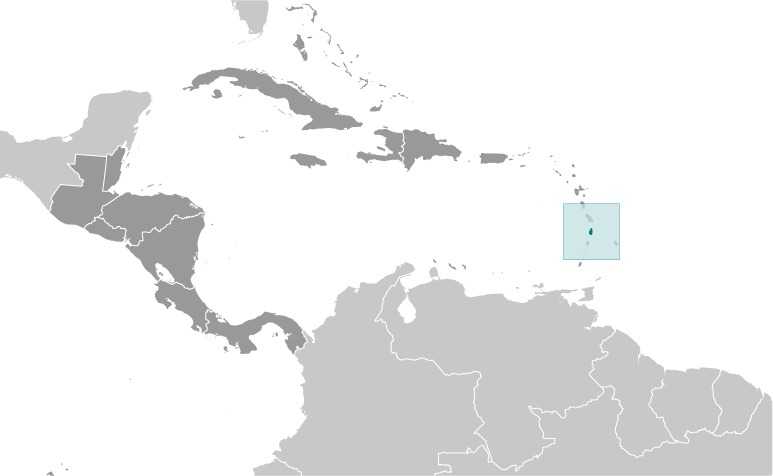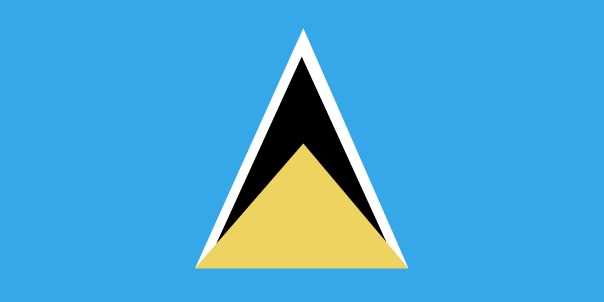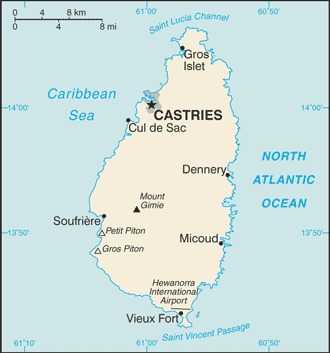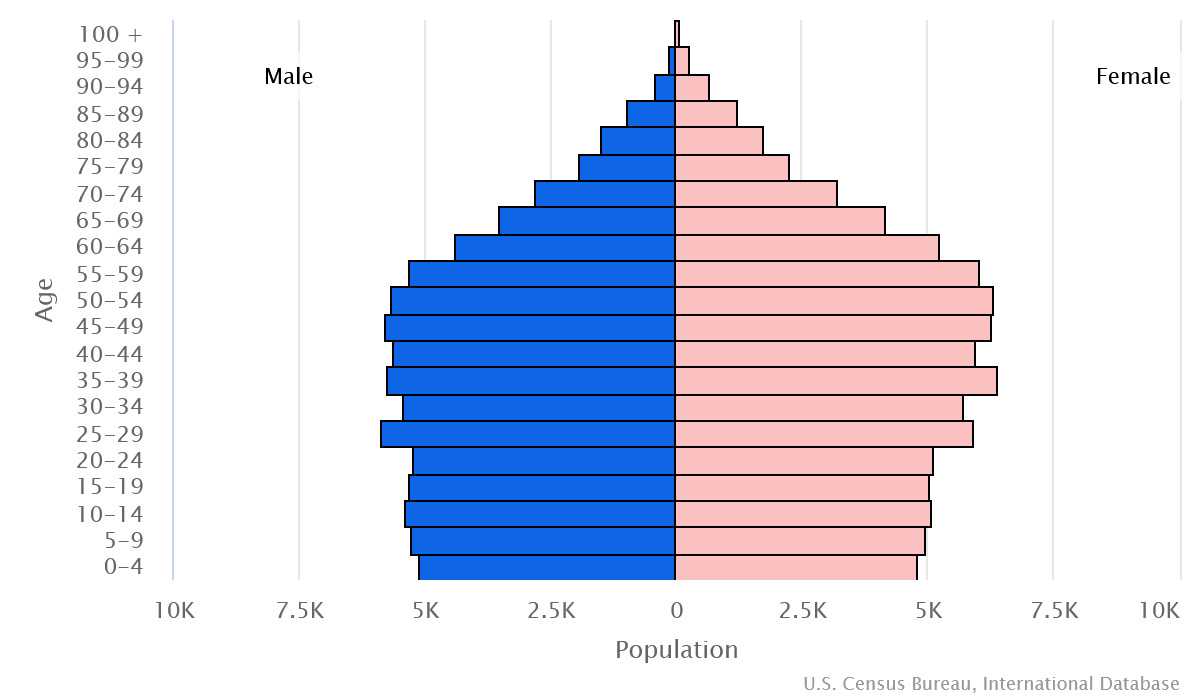Introduction
Background
England and France contested Saint Lucia -- with its fine natural harbor at Castries and burgeoning sugar industry -- throughout the 17th and early 18th centuries, with possession changing 14 times; it was finally ceded to the UK in 1814. Saint Lucia joined the West Indies Federation (1958-1962) and in 1967 became one of the six members of the West Indies Associated States. In 1979, Saint Lucia gained full independence.
Geography
Area
total: 616 sq km
land: 606 sq km
water: 10 sq km
Climate
tropical, moderated by northeast trade winds; dry season January to April, rainy season May to August
Natural resources
forests, sandy beaches, minerals (pumice), mineral springs, geothermal potential
People and Society
Population
total: 168,038
male: 81,517
female: 86,521 (2024 est.)
Ethnic groups
Black/African descent 85.3%, mixed 10.9%, East Indian 2.2%, other 1.6%, unspecified 0.1% (2010 est.)
Languages
English (official), Saint Lucian Creole
Religions
Roman Catholic 61.5%, Protestant 25.5% (includes Seventh Day Adventist 10.4%, Pentecostal 8.9%, Baptist 2.2%, Anglican 1.6%, Church of God 1.5%, other Protestant 0.9%), other Christian 3.4% (includes Evangelical 2.3% and Jehovah's Witness 1.1%), Rastafarian 1.9%, other 0.4%, none 5.9%, unspecified 1.4% (2010 est.)
Population growth rate
0.26% (2024 est.)
Government
Government type
parliamentary democracy under a constitutional monarchy; a Commonwealth realm
Capital
name: Castries
Executive branch
chief of state: King CHARLES III (since 8 September 2022); represented by Acting Governor General Errol CHARLES (since 11 November 2021)
head of government: Prime Minister Philip J. PIERRE (since 28 July 2021)
Legislative branch
description: bicameral Houses of Parliament consists of:
Senate (11 seats; all members appointed by the governor general; 6 on the advice of the prime minister, 3 on the advice of the leader of the opposition, and 2 upon consultation with religious, economic, and social groups; members serve 5-year terms)
House of Assembly (18 seats; 17 members directly elected in single-seat constituencies by simple majority vote and the speaker, designated from outside the Parliament; members serve 5-year terms)
Economy
Economic overview
upper middle-income, tourism-based Caribbean island economy; environmentally fragile; energy import-dependent; major banana producer; well-educated labor force; key infrastructure, IT, and communications investments
Real GDP (purchasing power parity)
$2.716 billion (2022 est.)
$2.344 billion (2021 est.)
$2.088 billion (2020 est.)
Real GDP per capita
$15,100 (2022 est.)
$13,000 (2021 est.)
$11,700 (2020 est.)
Agricultural products
coconuts, bananas, tropical fruits, fruits, plantains, root vegetables, chicken, vegetables, cassava, pork (2022)
Industries
tourism; clothing, assembly of electronic components, beverages, corrugated cardboard boxes, lime processing, coconut processing
Exports
$1.209 billion (2022 est.)
$710.431 million (2021 est.)
$452.444 million (2020 est.)
Exports - partners
US 17%, Guyana 16%, Trinidad and Tobago 14%, Barbados 9%, Suriname 7% (2022)
Exports - commodities
beer, gravel and crushed stone, paper containers, refined petroleum, liquor (2022)
Imports
$1.179 billion (2022 est.)
$815.666 million (2021 est.)
$666.968 million (2020 est.)
Imports - partners
US 76%, Trinidad and Tobago 4%, China 3%, UK 2%, Barbados 2% (2022)
Imports - commodities
refined petroleum, cars, plastic products, poultry, flavored water (2022)
Exchange rates
East Caribbean dollars (XCD) per US dollar -
Exchange rates:
2.7 (2022 est.)
2.7 (2021 est.)
2.7 (2020 est.)
2.7 (2019 est.)
2.7 (2018 est.)
Page last updated: Wednesday, May 15, 2024




